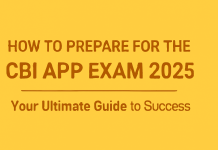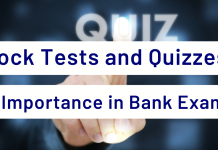High Level Profit and Loss Questions For RBI Grade B Exam: The RBI Grade B exam is important for students aspiring to work in the Reserve Bank of India. It is a prestigious examination that offers opportunities for a career in central banking and financial management. One crucial topic in the exam is Profit and Loss, which tests a candidate’s understanding of financial transactions and their impact on profitability.
High Level Profit and Loss Questions For RBI Grade B Exam
High-level Profit and Loss questions for the RBI Grade B exam may involve complex scenarios, such as calculating the overall profit or loss percentage after multiple transactions, determining the selling price or cost price of an item given a specific profit margin, or analyzing the impact of discounts and taxes on profit. Mastering these types of questions is essential for success in the exam and showcases the candidate’s ability to apply mathematical concepts to real-world financial situations. Review the following series of challenging questions to enhance your preparation for the upcoming RBI Grade B exam and increase your chances of acing it.
Questions:
1. Axe and Wye purchased the Bikes at the same price and later on Zed purchased both the bikes at the same price of Rs. 72000. But the profit % of Axe was A% while profit % of Wye was B% since Wye calculates his profit on SP, if Zed sells one of the bikes to Pee at A% profit. What is the cost price for Pee if B= 41(2/3)% A?
- 150400
- 176200
- 172800
- 196000
- 184500
2. A Publisher published 2500 books for Rs. 175000. He gave 400 books free as samples to some books shops, and he was able to sell 2/3rd of the remaining books at 15% discount, besides the remaining books for marked price. Find the Profit % of the publisher if he gives 20% discount of the total selling price to the salesman, if the marked price of each Book is Rs. 200.
- 66.66%
- 72.8%
- 56.8%
- 82.4%
- 42.8%
Directions (3-5): During freedom sale Ayush offered 5 different items on Amazon i.e. T.V, washing machine, iPhone, power bank and microwave. He got 20% off on T.V and bought it for Rs. 32,000. In this transaction the seller still made a profit of 28%. The MRP of the microwave was Rs. 12000, on which the seller offered 5% discount and still gained 20%. After getting a 12% discount, he paid Rs. 44,000 for an iPhone. Cost price of the washing machine was Rs. 20,000 and the seller made a profit of 8% from him. The MRP of the power bank is Rs. 2500 but he purchased it at Rs. 2000.
3. MRP of the washing machine is approx. what percent of the cost price of the microwave, if the discount rate offered on the washing machine is twice that of microwave?
- 238.19%
- 235.56%
- 252.63%
- 270.24%
- 286.12%
4. If the ratio between the cost price and MRP of the iPhone is 4:5 and the cost price of the power bank is 1600, then the profit/loss percentage on the power bank is what percent more/less than profit/loss percentage on the iPhone?
- 120% more
- 150% more
- 110% less
- 210% less
- 150% less
5. If there has been a loss of 20% on microwave instead of 20% profit. Then the new selling price is how much less than the original S.P.? (Approximate)
- 45%
- 30%
- 25%
- 33%
- None of these
6. The Label price of an article is 80% more than the CP of the article. When it is solid at x% discount then _______% percent profit is obtained and when it is sold at a discount of 2x%, _______% profit is obtained. Which of the following options
i.50, 20
ii.60, 40
iii.40, 40
iv.30, 50
v. None of these
- Only (i) & (ii)
- Only (ii) & (iii)
- Only (iii) & (iv)
- Only (iv) & (v)
- None of these
7. Dharmesh marked up the price of shoes by 50% and sold at (x – 10) % discount and sold the mobile at 10% profit. If the cost price of mobile and shoes is Rs. 240x and Rs. 9600 and the ratio of the profit earned from mobile to shoes is 2: 1.
From the statement given in the above question which of the following can be determined.
i) Value of x
ii) Selling price of mobile
iii) Marked price of mobile
iv) Ratio of cost price of mobile to shoes
- (i) and (ii)
- All (i), (ii), (iii) and (iv)
- (i), (iii) and (iv)
- (i), (ii) and (iv)
- (i), (ii) and (iii)
8. A shopkeeper marked an article at ____% above the cost price and sold it after two consecutive discounts of 20% and 10%. In this transaction the shopkeeper had a profit of ____%.
The values given in which of the following options will fill the blanks in the same order in which is it given to make the above statement true:
I. 90, 26 II. 55, 11.6 III. 40, 2 IV. 50, 8
- Only I
- Only I and III
- Only I, III and IV
- Only II, III and IV
- Only II and IV
9. Reena bought an article of cost price Rs. 3750, marked it up by ______ above cost price and sold it at a discount of Rs. _____, and thereby made a profit of Rs. 1050.
The values given in which of the following options will fill the blanks in the same order in which is it given to make the statement true:
I. 60%, 1200
II. 50%, 750
III. 40%, 450
- I and II
- I and III
- II and III
- only I
- only II
10. Ayush bought some chairs and tables from a shopkeeper. The marked price of a chair and a table were in the ratio 4 :7. The shopkeeper gave discounts of 25% and 30% on the chair & the table respectively. The ratio of chairs and tables bought by Ayush is 5:4. If Ayush sells each chair and table bought by him at discounts of 30% and 25% respectively after marking up the prices of both by 50% and gives one table free for every two chairs bought by a customer and only 2/5th of the total chairs are sold in bunch of two chairs, then what is the approx. profit/loss % made by Ayush after selling all of the items which he bought from the shopkeeper?
- 7%
- 8.2%
- 5%
- 2.5%
- None of these
Solutions:
1. 3.
Let the Cost Price for Axe and Wye be x
SP for both Axe and Wye = 72000
CP for Zed = 72000 (1 mobile)
Profit for Axe = A%
Profit for Wye = B% = 41*2/3% A = A ×125/(3 ×100) = A × 5/12
Now, the amount of profit for Axe and Wye is same
Therefore, x × A/100 = 72000 × A × 5/12 ×1/100
x = 30000
Cost price for Axe and Wye is 30000
For Axe :
CP = 30000 SP = 72000
Profit = 72000 – 30000 = 42000
Profit % for Axe = 42000/30000 × 100 = 140%
For Zed :
CP = 72000 Profit = 72000 × 140% = 100800
SP = 100800 + 72000 = 172800
Therefore, Cost price for Pee = 172800
2. 2.
Cost Price = 175000
Books = 2500
Less (Free samples) = 400
Remaining Books = 2100
2/3rd of 2100 = 1400 books
Selling Price of One book after discount = 200 – Discount (15%) = 200 – 30 = 170
Selling Price = 1400 × 170 + 700 × 200 = 238000 + 140000 = 378000
Actual Selling Price = 378000 × 4/5 = 302400
Profit = Selling Price – Cost Price = 302400 – 175000 = 127400
Profit % = 127400/175000 ×100 = 72.8%
3. 3.
Selling price of washing machine = 108*20000/100 = 21600
Discount offered = 2 × 5 = 10%
MRP of washing machine = 21600 × 100/90 = Rs. 24,000
Selling price of Microwave = 95 × 12000/100 = 11400
Cost price of microwave = 11400 × 100/120 = 9500
Required % = 24,000 × 100/9500 = 252.63 %
4. 5.
Selling price of iPhone = 44000
MRP of iPhone = 44000 × 100/88 = 50000
Cost price of iPhone = 50000 × 4/5 = 40000
% profit on iPhone = (44000 – 40000) × 100/40000 = 10%
% profit on power bank = (2000 – 1600) × 100/1600 = 25%
Required less % = (25 – 10) × 100/10 = 150%
5. 4.
Original selling price of Microwave = 95 × 12000/100 = 11400
Cost price of microwave = 11400 × 100/120 = 9500
New selling price = 9500 × 80/100 = 7600
% less = (11400 – 7600) × 100/11400 = 33 %
6. 1.
Let CP = 100 &MP(labeled price) = 180
From (i),
When profit = 50% so SP = 150 then there will be Rs. 30Discount.
Now if there is twice the discount , which means Rs. 60 discount, then New SP = 180-60 = Rs. 120, then profit will be 20%.
Hence (i) is possible.
From (ii),
When profit = 60% so SP = 160 then there will be Rs. 20 Discount.
Now if there will be a twice discount which means Rs. 40 discount then New SP = 180-40 = Rs. 140, then profit will be 40%.
Hence (ii) is possible.
From (iii),
When profit = 40% so SP = 140 then there will be Rs. 40 Discount.
Now if there will be a twice discount which means Rs. 80 discount then New SP = 180-80 = Rs. 100, then there will be no profit no loss.
Hence (iii) is not possible.
From (iv),
When profit = 30% so SP = 130 then there will be Rs. 30 Discount.
Now if there will be twice the discount which means Rs. 60 discount then New SP = 180-60 = Rs. 120, then profit will be 20%.
Hence (iv) is not possible.
7. 4.
Cost price of shoes = Rs.9600
Cost price of mobile = 240x
MP of shoes = 150% of 9600 = 14400
SP of shoes = 14400 x (100 – x + 10)/100 = 144 x (110 – x) = 15840 – 144x
Profit of shoes = 15840 – 144x – 9600 = 6240 – 144x
Profit of mobile = 10% of 240x = 24x
24x/(6240 – 144x) = 2/1
12x = 6240 – 144x
156x = 6240
x = 40
Cost price of mobile = 240 x 40 = 9600
Selling price of mobile = 9600 x 110% = Rs. 10560
Ratio of CP of mobile to shoes = 9600: 9600 = 1: 1
We cannot find the marked price of the mobile.
8. 5.
Equivalent single discount of two consecutive discounts = 10 + 20 – (10×20)/100 = 28%
Let the cost price of the article = Rs. 100
Option (I):
Marked price of the article = Rs. 190
So, the selling price of the article = 0.72 x 190 = Rs. 136.8
So the profit percent = 36.8%
Therefore, Option (I) can’t be the answer.
Option (II):
Marked price of the article = Rs. 155
So, the selling price of the article = 0.72 x 155 = Rs. 111.6
So the profit percent = 11.6%
Therefore, Option (II) can be the answer.
Option (III):
Marked price of the article = Rs. 140
So, the selling price of the article = 0.72 x 140 = Rs. 100.8
So the profit percent = 0.8%
Therefore, Option (III) can’t be the answer.
Option (IV):
Marked price of the article = Rs. 150
So, the selling price of the article = 0.72 x 150 = Rs. 108
So the profit percent = 8%
Therefore, Option (IV) can be the answer.
9. 2.
Selling Price of article = 3750 + 1050 = Rs. 4800
I. 60%, 1200
Marked-up price of article = 3750 × 1.6 = Rs. 6000
Therefore, selling price of article after discount = 6000 – 1200 = Rs. 4800
II. 50%, 750
Marked-up price of article = 3750 × 1.5 = Rs. 5625
Therefore, selling price of article after discount = 5625 – 750 = Rs. 4875
III. 40%, 450
Marked-up price of article = 3750 × 1.4 = Rs. 5250
Therefore, selling price of article after discount = 5250 – 450 = Rs. 4800
10. 1.
Let the MP of a chair and a table be Rs.4x and Rs.7x respectively.
And, the number of chairs and tables bought will be 5y and 4y respectively.
CP of a chair for Ayush = (100 – 25)% of 4x = Rs.3x
CP of a table for Ayush = (100 – 30)% of 7x = Rs.4.9x
Total CP for Ayush = 3x × 5y + 4.9x × 4y = 15xy + 19.6xy = 34.6xy
SP of a chair for Ayush = (100 – 30)% of (100 + 50)% of 3x = 3.15x
SP of a table for Ayush = (100 – 25)% of (100 + 50)% of 4.9x = 5.5125x
Number of chairs sold in bunch of four by Ayush = (2/5) × 5y = 2y
So, number of table sold for free by Ayush = (1/2) × 2y = y
Total SP for Ayush = 3.15x × 5y + 5.5125x × (4y – y) = 15.75xy + 16.5375xy
= 32.2875xy
Profit % = [(34.6xy – 32.2875xy)/ 34.6xy] ×100 = 7 % approx.
Conclusion
Supercharge your preparation for the upcoming RBI Grade B exam with the comprehensive series on High-Level Profit and Loss Questions by ixamBee. This specially curated series is designed to enhance your understanding and mastery of complex profit and loss concepts, ensuring you are well-equipped to tackle challenging exam questions. By engaging with these rigorous questions, you’ll not only sharpen your mathematical skills but also develop critical thinking and problem-solving abilities essential for success in the RBI Grade B exam.
Read Also
Puzzle Reasoning Questions For RBI Grade B Exam
Caselet DI Questions For RBI Grade B Exam
Seating Arrangement Questions For RBI Grade B Exam














